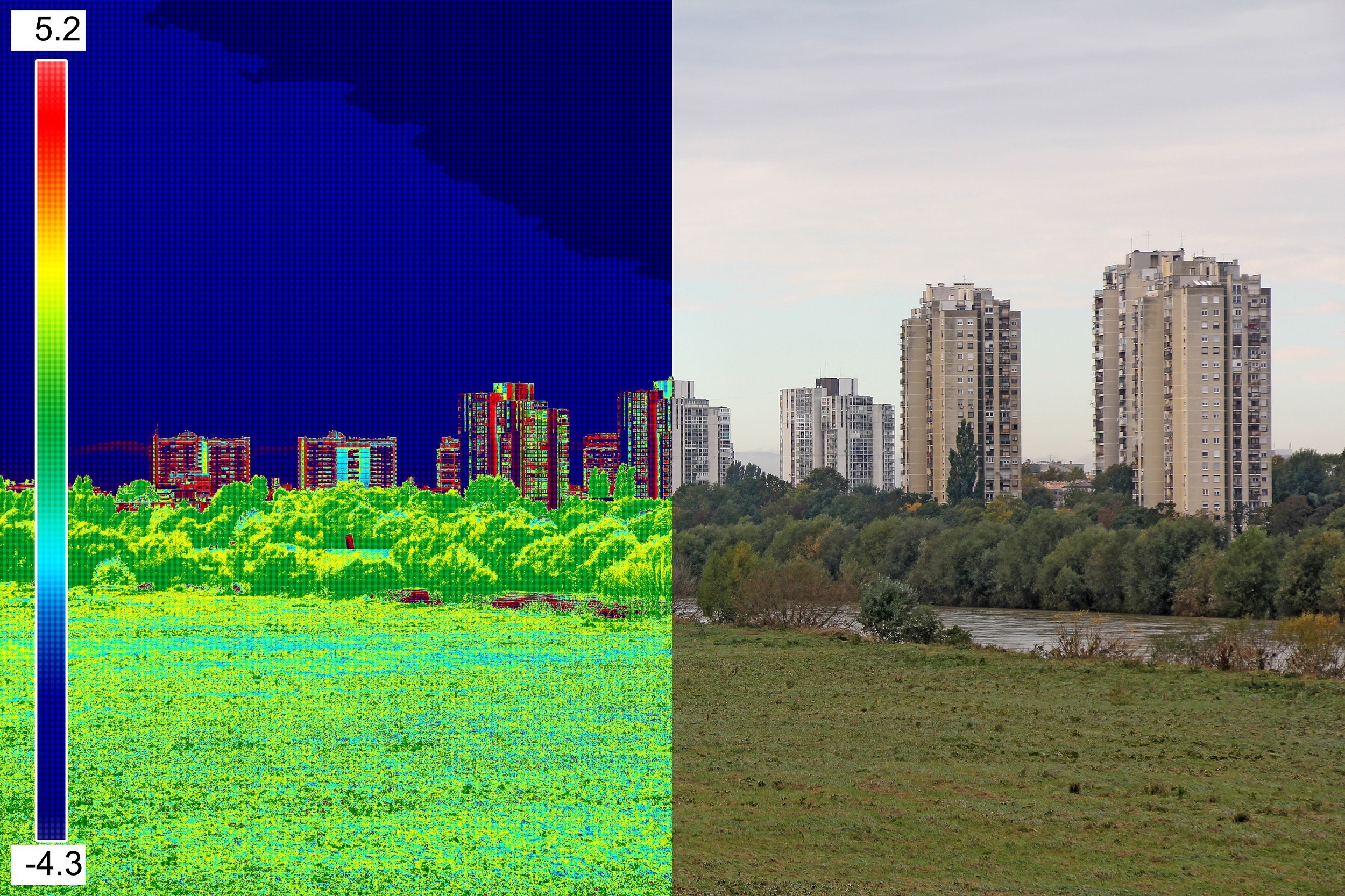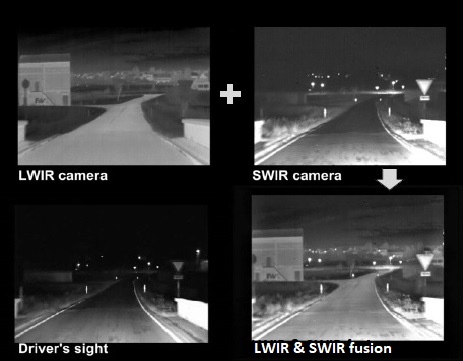
- Solutions
Vision & Awareness
Detection & Tracking
Weapon System Vision
Optical modules for semiconductor & industrial
- Technologies
Design
Fibre Imaging
Image Processing
Wavelengths
- Products
- About

TECHNOLOGY
To provide the best visibility under all conditions, it is necessary to optimize and fuse images from different available sources into a single image that immediately provides the user with the best possible situational awareness.
Different forms of infrared imagery can distinguish targets from their background based on thermal information (MWIR and LWIR) or reflection of background radiation (SWIR). SWIR imaging in particular works well in all weather conditions, both day and night and when looking through fog, snow, rain, and smoke.
Visible images, on the other hand, can display texture details with high spatial resolution and definition in a manner similar to the human eye. Therefore, it is desirable to merge these two types of images to combine the benefits of thermal radiation information in infrared images and detailed texture information in visible images.

Nedinsco’s optical experts have developed this technology by using adaptive blending of the RGB channels and the Alpha information from the different inputs. This blending or fusion optimizes image intensity, but also reduces resource usage and latency. Latency values are extremely important for e.g. Driver Vision Enhancement solutions, which help drivers drive in poor weather conditions or at night.
With infrared and visible image fusion, we can optimize the gradient for optimal visibility in all conditions.
Please contact us if you would like more information on your specific image fusion applications.

We know all about the high-end technologies needed to design and manufacture the best possible vision systems.